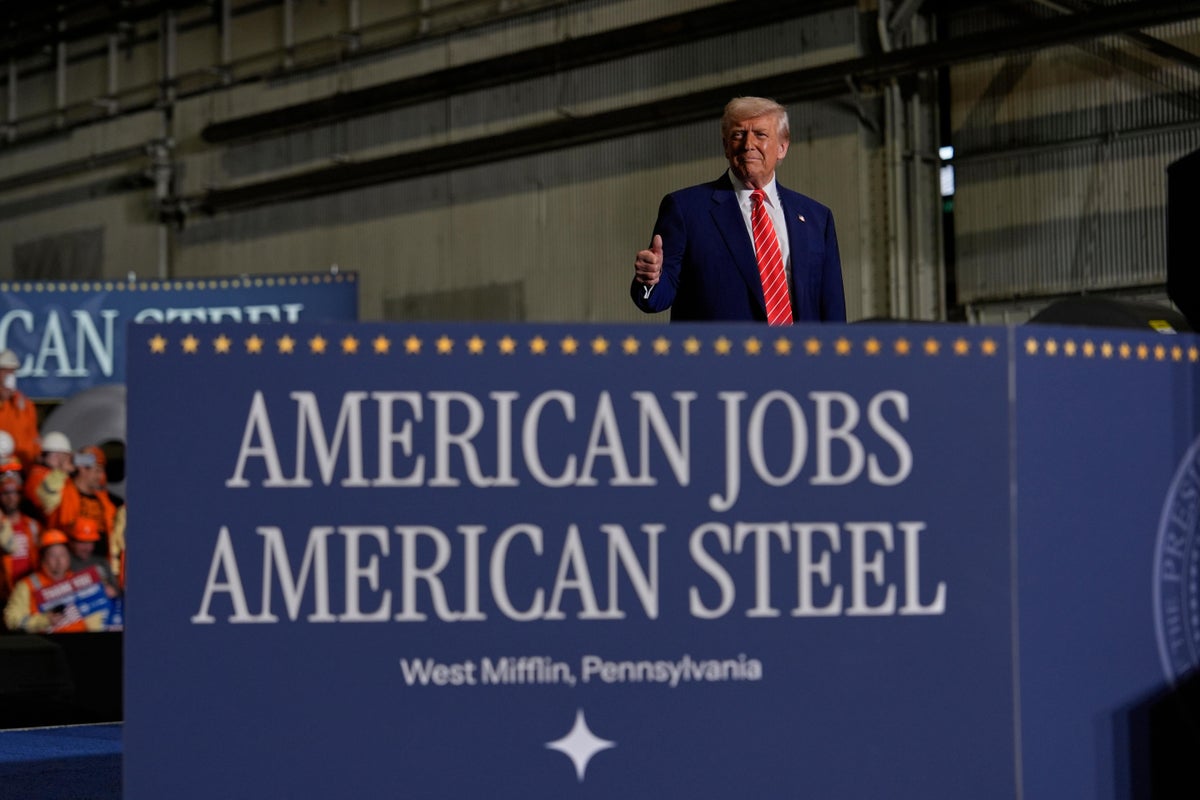
The US labor market delivered a surprising boost in June, adding a robust 147,000 jobs, while the unemployment rate unexpectedly dipped.
However, these positive headline figures concealed underlying weaknesses, as the American economy continues to grapple with the repercussions of Donald Trump’s economic policies, particularly his sweeping import tariffs and their unpredictable implementation.
June’s hiring figures modestly surpassed May’s 144,000 payroll increase, beating economists’ forecast of 118,000.
The unemployment rate fell to 4.1 per cent from 4.2 per cent in May, with the number of unemployed individuals decreasing by 222,000, defying forecasters’ expectations of a rise to 4.3 per cent. Labor Department revisions also added 16,000 jobs to April and May payrolls.
Average hourly wages, however, rose by a cooler-than-expected 0.2 per cent from May and 3.7 per cent year-on-year, nearing the 3.5 per cent consistent with the Federal Reserve’s 2 per cent inflation target.
Healthcare jobs increased by 39,000, with state governments adding 47,000 workers and local governments 33,000.
Despite the seemingly strong numbers, a deeper examination reveals a softening in the job market.
Sarah House, a senior economist with Wells Fargo, noted: “On net, it was a good report. But when you dig underneath the surface, it was another jobs report that didn’t look quite as good as first meets the eye.”
Private companies, for instance, hired only 74,000 workers in June, roughly half the 137,000 recorded in May, the fewest private sector hires since October, a month impacted by hurricanes.
State and local governments added nearly 64,000 education jobs in June, a figure potentially inflated by seasonal quirks around the school year’s end.
Moreover, the US labor force – those working and looking for work – saw a decline of 130,000 in June, following a substantial 625,000 drop in May.
Economists anticipate that Donald Trump’s immigration policies and the associated fear of deportations will continue to push foreign workers out of the labour force.
A shrinking labor force can artificially depress the unemployment rate, as jobseekers need time to find employment and can be counted as unemployed in the interim.
Despite low unemployment, the cooling hiring trend has made it harder for young people or those re-entering the workforce to find jobs, leading to longer searches or unemployment spells. The Labor Department reported a significant rise in discouraged workers – those who believe no jobs are available – increasing by 256,000 in June to 637,000.
Derek Wing, a communications manager laid off from a city government role in Seattle, described his experience as “terrifying”.
He noted major local employers like Microsoft continued to cut jobs, and he had heard “horror stories of people applying for jobs and then – crickets.”
“I had a couple of experiences where I would apply for a job and just feel like it was going out into the ether and never hearing back,” Wing recounted.
However, his fortunes swiftly changed; he applied for a position with Gesa Credit Union and secured a role as a communications strategist just six weeks later, a timeframe he called “superfast in this economy.”
The unexpected strength in June’s payroll figures is likely to reinforce the Federal Reserve’s cautious ‘wait-and-see’ approach, maintaining current interest rates. This strategy allows the central bank to better assess the full impact of Donald Trump’s tariffs and other policies on inflation and the broader job market.
The Fed raised its benchmark interest rate 11 times in 2022 and 2023 to combat surging inflation. As price pressures eased in 2024, the central bank reversed course, cutting rates three times in 2024, with more cuts anticipated. However, the Fed has adopted a more circumspect stance this year.
Carl Weinberg, chief economist at High Frequency Economics, commented: “Today’s results are more than positive enough to reduce expectations for Fed rate cuts in the wake of tariffs and policy chaos, at least for now.”
Following the release of the jobs data on Thursday, yields on US Treasuries immediately spiked. Traders in the futures market now see less than a 7 per cent chance of the Fed cutting its main interest rate at its next meeting later in July, a sharp decline from the nearly 24 per cent chance seen just a day prior, according to CME Group data.
Employers are now contending with the repercussions of Trump’s policies, particularly his aggressive use of import taxes, known as tariffs.
Mainstream economists assert that tariffs inflate prices for businesses and consumers, diminishing economic efficiency by curbing competition. They also provoke retaliatory tariffs from other nations, harming US exporters.
Trump’s unpredictable imposition of tariffs – announcing, suspending, then introducing new ones – has exacerbated anxiety, leaving businesses bewildered and hesitant to make decisions regarding hiring and investment.
Sarah House of Wells Fargo anticipates monthly job growth to fall below 100,000 in the latter half of the year.
She said: “We’re bracing for a much lower pace of job growth. There’s still a lot of policy uncertainty.”
